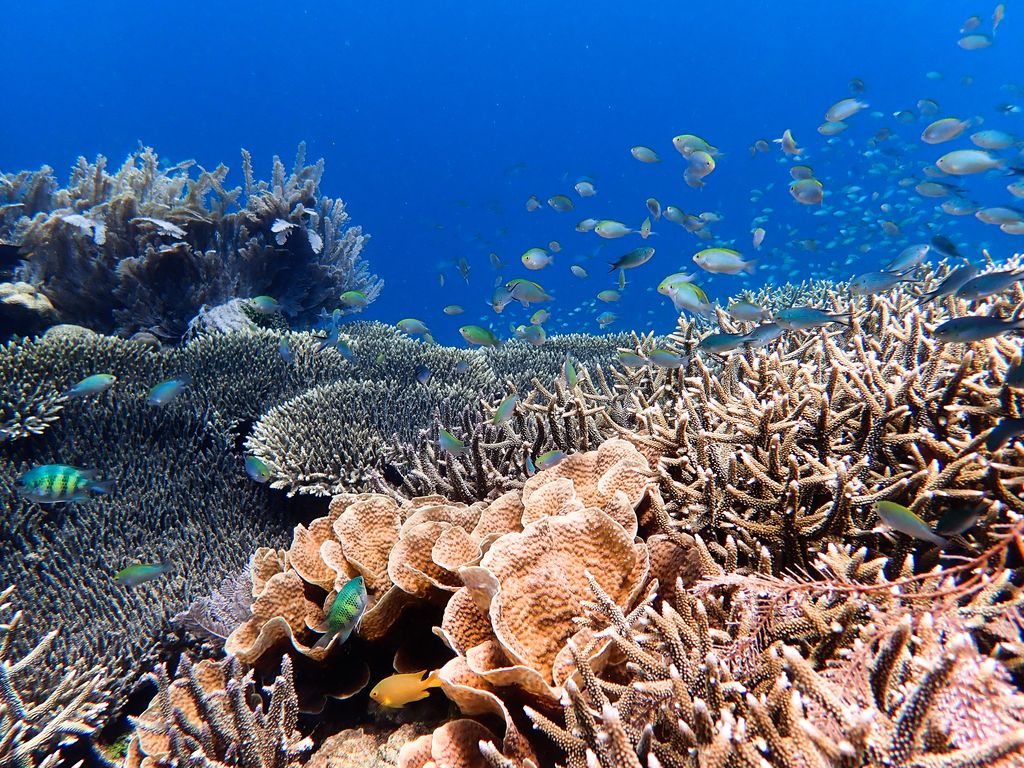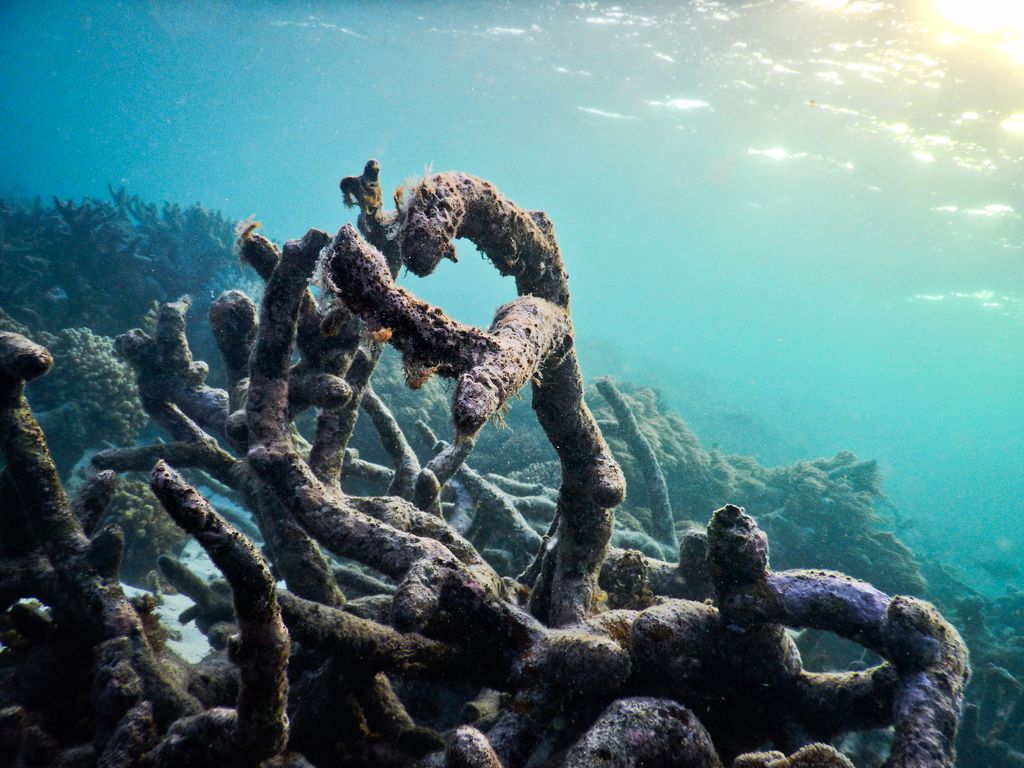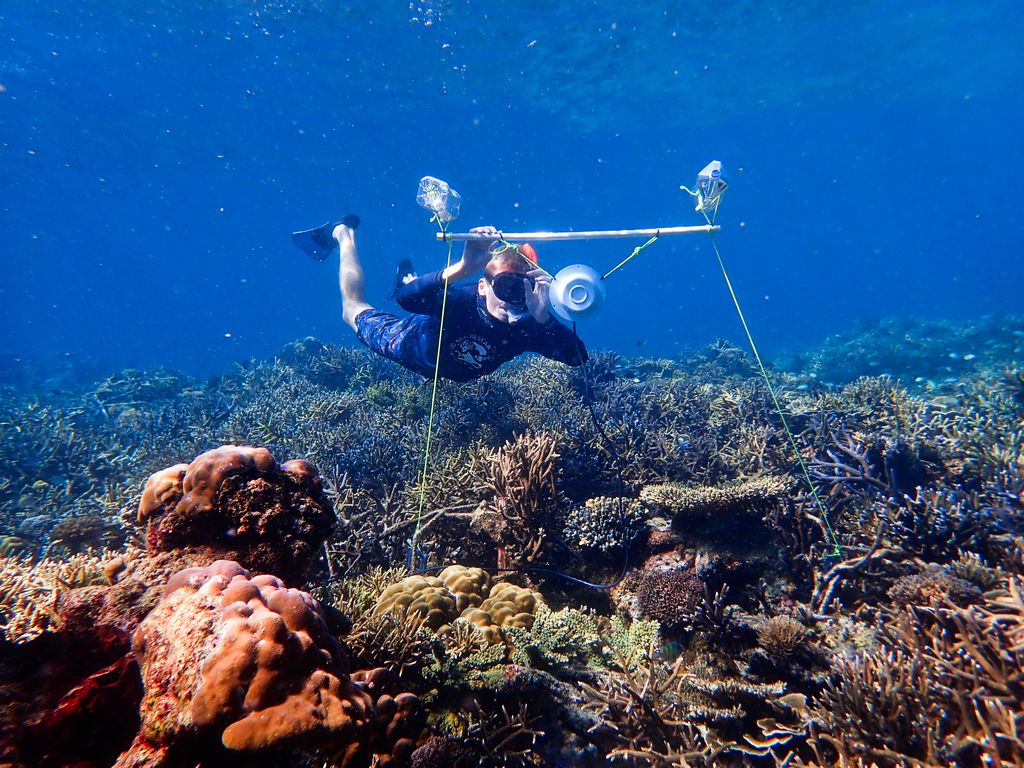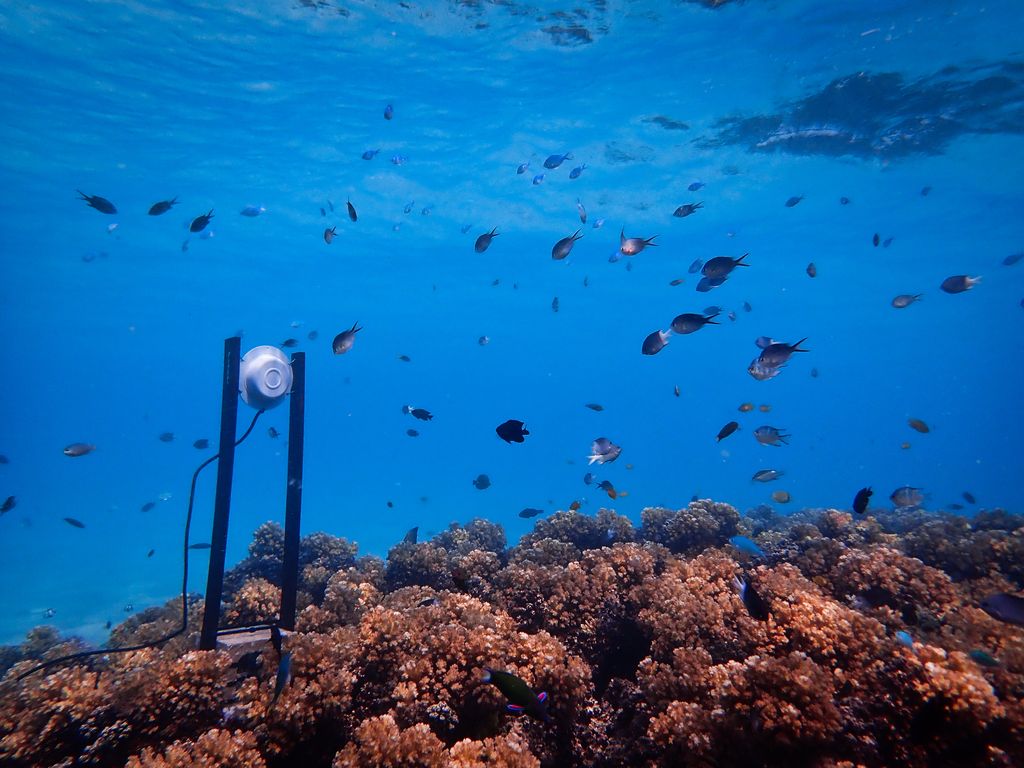Great Barrier Reef, Australia —(Map)
This article is the second in a series about different ways scientists are trying to protect coral reefs.
Corals are dying worldwide because of rising sea temperatures. As corals die, the sea creatures who live around them move on. Now scientists have found an unusual way to lure fish back – with underwater loudspeakers.
As the temperature of the world’s oceans has increased in recent years, corals around the world have begun to die off. This is often called “coral bleaching” because sometimes the dying corals turn white.

(Source: Tim Gordon, University of Exeter.)
The coral shapes we are used to seeing are built over a long time by millions and millions of tiny coral animals. These large structures provide conditions that attract and support many other sea creatures.
So when corals die off, it’s not just about the corals. It’s also about the collection of creatures that live in and around them. The richness of all these different kinds of animals in the same place is very important to the health of oceans.

(Source: Tim Gordon, University of Exeter.)
Scientists from the UK and Australia were curious about how important sound was for attracting fish to coral reefs. They wanted to see if they could attract fish to an area with dead coral by playing back the sounds from a healthy coral reef.
The scientists call this method “acoustic enrichment” – making an area richer in sound. The scientists have recently published their results in the magazine Nature.
Though many people think of the underwater world as silent, that’s not actually true. There are many different kinds of animals, and they make an interesting mixture of sounds. These are the sounds of a healthy reef.
(Source: Tim Gordon, University of Exeter.)
Though many people think of the underwater world as silent, that’s not actually true. There are many different kinds of animals, and they make an interesting mixture of sounds as they go about their daily lives.
The scientists decided to test their idea at the Great Barrier Reef. That’s the world’s largest coral reef and home to many sea animals. But it’s also seriously threatened by the warming waters caused by climate change.

(Source: Tim Gordon, University of Exeter.)
The scientists set up piles of dead corals in 33 different places around the Great Barrier Reef. At one third of the piles they did nothing. At another third, they set up underwater loudspeakers, but didn’t play anything through the speakers.
In the final set of sites, they set up underwater loudspeakers, and played recordings of sounds from a healthy reef every night. The scientists ran the experiment for six weeks.

(Source: Harry Harding, University of Bristol.)
At the end of those six weeks, the scientists found that the noisy sites had twice as many fish as the silent sites. These sites also had 50% more different kinds of fish. The fish that came to the noisy sites came faster and they stayed longer.
The scientists believe their experiment shows that acoustic enrichment is one possible way to get sea life to come back to areas where coral reefs have been damaged.

(Source: Tim Gordon, University of Exeter.)
The scientists point out that their method doesn’t make the coral reefs healthy again. But attracting more fish may create conditions that could make it easier for damaged reefs to bounce back.
To truly restore reefs will require getting the climate crisis under control.
😕
This map has not been loaded because of your cookie choices. To view the content, you can accept 'Non-necessary' cookies.
